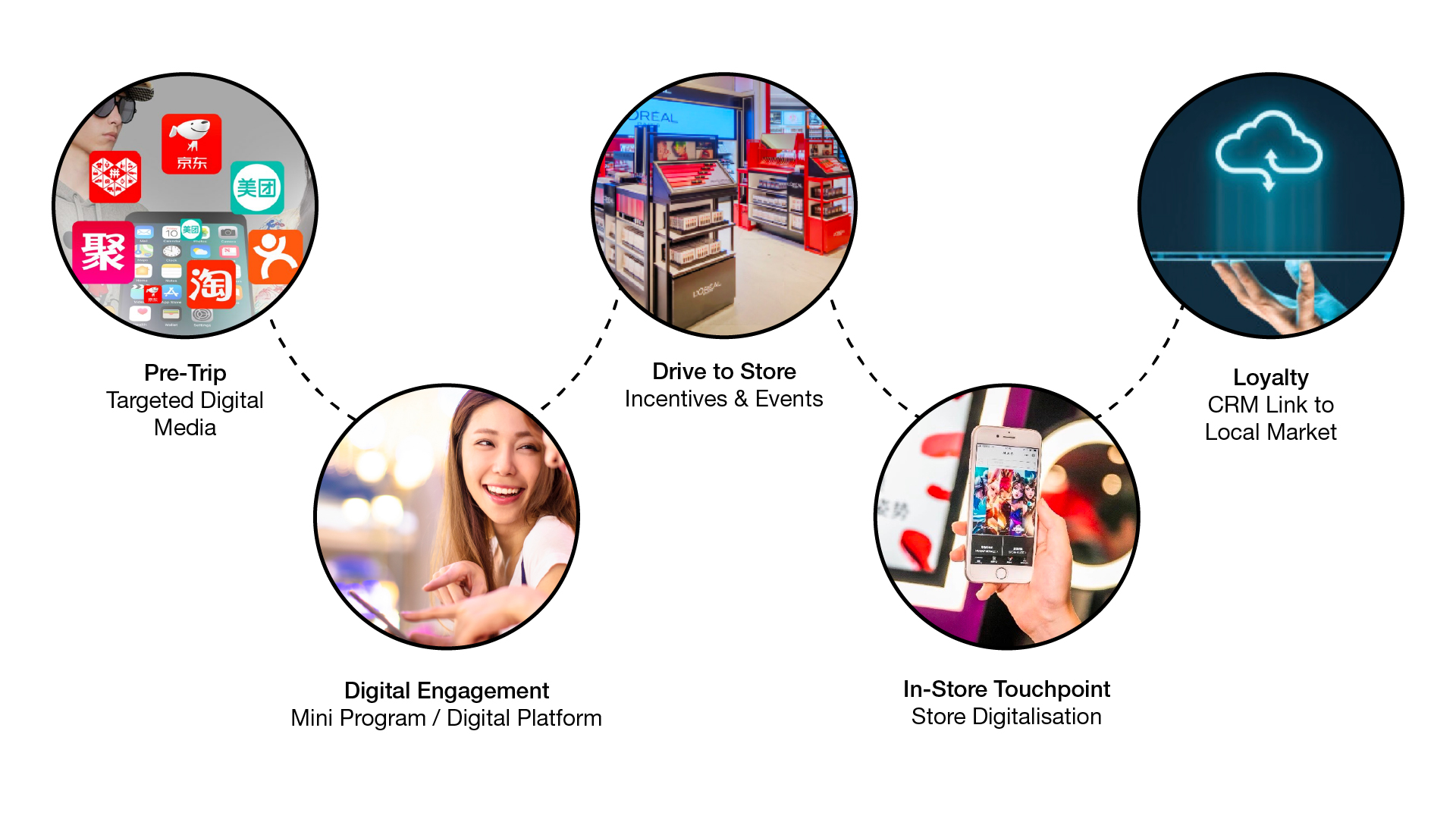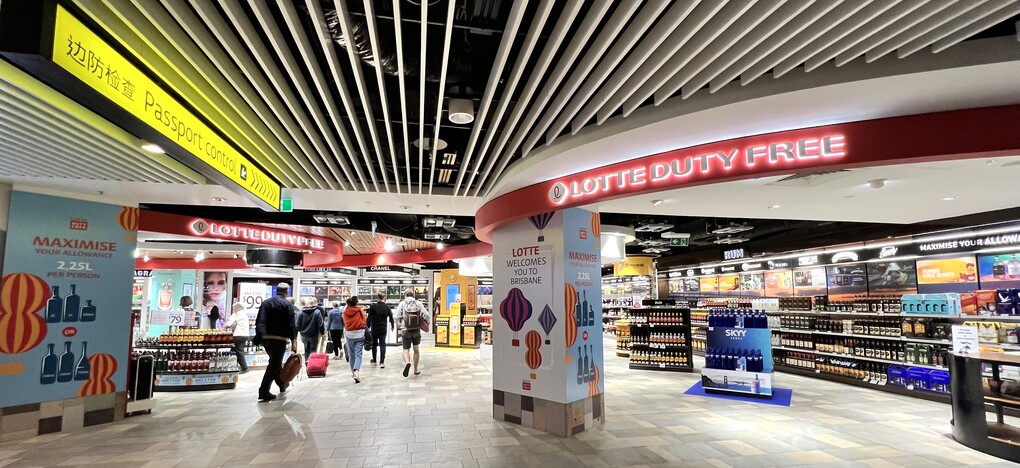Welcome to the latest in a series of columns brought to you in association with CircleSquare. The experiential marketing, brand activation and customer experience specialist is using this column to share insights and ideas that help the global travel retail industry capitalise on the opportunities that present themselves. In this edition, the CircleSquare team homes in on digital transformation and assesses how travel retail can be a recruitment channel for domestic markets.
To many it’s the long-awaited saviour of travel retail, yet to others it’s a dirty word which brings them out in a fever whenever they hear its name. You can’t avoid hearing the stories about its unbelievable potential but it’s also impossible to ignore the whispers of ineffectiveness. It’s retail’s dirty little secret and it’s not going away any time soon.
What is not a secret is its name – omnichannel – a simply ridiculous, grandiose, and misleading mantle which provides significantly more confusion than clarification. However, what is unquestionably a secret is just how few people know what it actually means; fewer still, what it actually does.
The trouble is, if you don’t understand omnichannel, any attempt to incorporate it into your business model will inevitably be a colossal, eye-wateringly expensive mistake. On the flipside, the few who do ‘get it’ appear to experience inexplicable success.
So suspend your judgement for a few minutes and let’s reveal this dirty little secret for what it really is.

Omnichannel is not a new concept by any means. It was a trendy buzzword well over a decade ago and appeared in an ever-increasing number of PowerPoint presentations to which the vast majority of people nodded along like they knew exactly what it meant.
But our customers, or to be more specific our travellers, have been living in this omnichannel world for the past ten years so it is no longer enough to simply think of digital acceleration or omnichannel excellence. Instead, brands have to take a customer-centric approach and craft stories that are told consistently and meaningfully along the entire customer journey.
Despite what we are told, the brand experiences that appear to work in Paris, New York or Milan are actually lagging way behind what a new generation of customers have come to expect.
Simply stated, the redefinition of a great customer experience isn’t the more the merrier. Customers are expecting that brands take them on a personalised journey and engage them with relevant content, be it education, gamification or product recommendation.
What does this mean for travel retail?
Travel retail has traditionally been an industry where customer engagement happens at the physical point of sale, starting after passport control, or slightly earlier if we include OOH advertising. The specific nuances of travel retail – the difficulty in knowing where customers are from and where they are going, and the steady year-on-year passenger growth – did nothing to foster innovation in the industry, particularly when it came to engaging with customers.

But the pandemic hit and changed everything. Fewer people travelling means it has become essential to work on conversion rates in order to generate sales, and therefore engage with potential customers before they started their journey.
The bigger picture is that travel retail was forced into its own digital transformation. And it is fascinating to see, particularly as this is a huge industry – famously dubbed the ‘sixth continent’ by L’Oréal. This digital transformation is happening in front of our very eyes, and it creates huge opportunities for those who can identify them.
Take the offshore duty free market in Hainan as an example. It has departed from the traditional travel retail activation canvas and is now flourishing with new, integrated retail experiences. Unsurprisingly, this is one of the only places in the world where the industry is booming and the specificities of this market make it an ideal test bed for brands to experiment.
We are starting to see activations that include paid digital media to engage with customers while they’re still at home, KOL driven content, VIP events, and a digitalisation / gamification of physical retail.
While it’s great to see brands starting to experiment with new touchpoints in travel retail, it is hard not to notice that in most cases these campaigns lack a form of integration. Historically all touchpoints are planned in silos and rarely work together as a single narrative that spans the customer’s entire brand experience. It is essentially lacking that special ‘red thread’ that takes customers on a personalised journey.
The Connected Traveller Journey

So how exactly does anyone piece all these touchpoint together and turn them into a single personalised journey? That’s where we come in. We have identified the five essential, core steps required in what we call The Connected Traveler Journey:
1/ Pre-trip engagement
Social media is emerging as a core driver of awareness and it is increasingly becoming the first touch point on the customer journey. Indeed, a targeted media strategy allows brands to reach potential customers before they travel, at a time when they are planning their purchases.
However, a clear social media strategy is not a silver bullet. Reaching the right people at the right time in their journey is very valuable but the message needs to be meaningful. Hence the importance of a personalised and engaging story along the entire customer journey – in other words, a strong content strategy – to maximise customer acquisition and progression along the journey.
2/ Digital platform
Once customers are engaged, it is important for brands to have a dedicated digital platform that acts as a personalised content delivery platform (with the brand controlling the content and the level of personalisation) and central data collection platform to ensure we can gather data from the digital AND the physical touchpoints in order to drive loyalty.
3/ Drive to store
A dedicated platform also enables brands to redirect traffic to the most relevant locations based on customer’s individual journeys, whether this is e-com for replenishment, VIP events for affluents prospects or an outpost for travellers hungry for new experiences. This, in turn, ensures that the brand maximises conversion rates.
4/ In-store touchpoint
Integrating a customer-centric strategy also has an impact on store design. It allows for more personalised in-store experiences and service for customers, and invariably increases the store efficiency and data gathering.
5/ Loyalty
Loyalty has always been a difficult one to crack in travel retail. Data gathered along the journey can be used to refine customer personas and the targeting of future campaigns, but at an individual level, loyalty is complicated. The simple reason: frequency of travel.
So why not give an additional definition to the word omnichannel? It does not have to be only about merging online and offline experiences, it can also mean taking a customer-centric approach to travel, and merge a travel retail and local market customer experience.

Travel retail as a recruitment channel for domestic markets
A huge opportunity exists to completely redefine travel retail – moving from the view of a channel defined by sales to a channel defined by customers, or more specifically, travellers.
Travel retail is the perfect channel to introduce new brands and products to customers who are in the right mindset. But looking at a journey from a customer’s perspective, why should it stop when they get back home?
Travel retail and local markets have their many differences, not to mention competing interests and different P&Ls. But by taking a customer-centric approach to customer journeys and by integrating a digital platform that acts as a central data collection hub along the entire customer journey, online and offline, we end up with a very valuable currency: data.
Data is not only valuable negotiating power with local markets, it also enables an entirely new dynamic. Brands don’t have to look at the ROI of their activations from the perspective of the sales during a one month promotion, but instead can look at customer acquisition costs based on the lifetime value of a customer.
In the midst of travel retail’s digital transformation, there is a once-in-a-generation opportunity to redefine itself as a recruitment channel, and a revenue driver, for the local market.
Perhaps this dirty little secret is exactly what we’ve been waiting for after all.
*This article first appeared in The Moodie Davitt eZine. Click here to access the eZine version.






